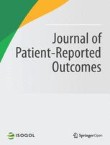Citation Impact 2023
Journal Impact Factor: 2.4
5-year Journal Impact Factor: 3.1
Source Normalized Impact per Paper (SNIP): 1.019
SCImago Journal Rank (SJR): 0.872
Speed 2023
Submission to first editorial decision (median days): 10
Submission to acceptance (median days): 173
Usage 2023
Downloads: 642,043
Altmetric mentions: 559
